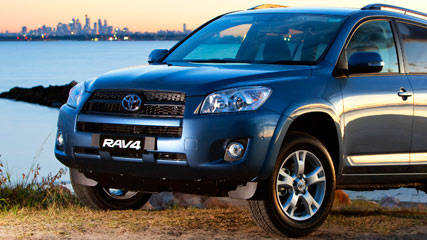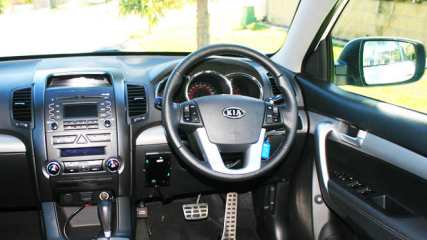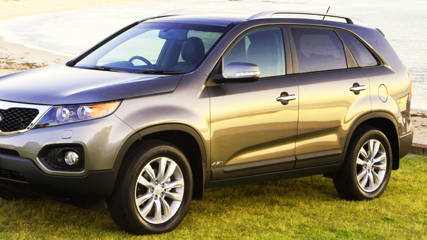Used small SUVs review
By Stuart Innes · 25 Jun 2010
More and more manufacturers are realising they can attract extra sales by creating two-wheel-drive versions of their 'soft roaders'.2WD buyers are looking for the practicality of the wagon - a commanding driving position, perhaps a little higher ride height for a short drive down a dry dirt track, the 'look' of an SUV, strong suspension, and in some cases seven seats - without getting a people-mover.If they don’t need to go offroad, in the snow, through muddy tracks, they don’t need the four-wheel-drive ability. But they can get everything else they want with 2WD versions of the SUV.What’s the benefit of 2WD?By opting for the 2WD version, the vehicle costs thousands of dollars less because that second set of drive-shafts, differentials, wheel joints and bits are not in the vehicle. And that means the 2WD versions weigh considerably less. Less weight means less fuel, a cost saving to the owner and lower exhaust emissions for the planet. And less weight means better performance in acceleration and handling.The month of May this year was the best-ever May for new-vehicle sales in Australia. Part of the reason was a staggering 29 per cent growth in SUV sales over May of last year. Clearly Aussies still love their SUVs and many of those extra sales were because of 2WD versions.Toyota offering its large Kluger in 2WD and 4WD, in all trim levels. The choice (between 2WD and 4WD) will give buyers an alternative purchase decision based on their real needs. Toyota also offers the RAV4, which gets revised gear ratios for with 2WD.Ford launched its Territory SUV in 2004 in 4WD and 2WD right from the start. But some brands don’t offer the full choice of models of the 4WD. For example, the Kia Sorento 2WD cannot have Kia's excellent turbo-diesel engine of the 4WD, but it's recognised that 2WD buyers are looking for lower buying and running costs and so only a base model engine is provided.KIA SORENTO - $36,490 Drives well with good ride; six-speed automatic, fuel economy Engine sometimes works hard to move 1814kg weightA much better onroad wagon than previous (4WD-only) model. The 2WD Kia Sorento is available only with a 2.4-litre four-cylinder petrol engine to keep down cost.Engine: 2.4-litre, four-cylinder, petrolPower: 128kW @ 6000rpmTorque: 226Nm @ 3750rpmTransmission: Six-speed automatic; front-wheel-drive.HOLDEN CAPTIVA - $27,990 Low price, plenty of Holden dealers for back-up Modest power, tows only 1500kg, no auto optionThe Holden Captiva 2WD gives wagon motoring to Holden followers not wanting a V6 or V8 Commodore Sportwagon. Captiva has been selling well lately.Engine: 2.4-litre, four-cylinder, petrolPower: 103kW @ 5200rpmTorque: 220Nm @ 2400rpmTransmission: Five-speed manual; front-wheel-drive.TOYOTA KLUGER - $40,990 Engine power, full model range, including seven-seater Large, blunt design, fuel useThe larger option from Toyota can be had in all the trim levels of the Kluger 4WDs, which means seven-seaters as well. The well-known 3.5 V6 engine is a good 'un.Engine: 3.5-litre, V6, petrolPower: 201kW @ 6200rpmTorque: 337Nm @ 4700rpmTransmission: Five-speed automatic; front-wheel-drive.FORD TERRITORY - $39,890 Torque at low revs, parts costs, seven-seat option Size to park, fuel use, dating body shape, auto only a four-speedThe only Australian-designed and built SUV, Territory uses Ford Falcon running gear and is a popular vehicle, especially now that Falcon wagon is ceasing production.Engine: Four-litre, six-cylinder, petrolPower: 190kW @ 5250rpmTorque: 383Nm @ 2500rpmTransmission: Four-speed automatic; rear-wheel-drive.BMW X1 sDrive18i - $43,500 BMW owner pride, diesel option, equipment, fuel economy, 1430kg weight Expensive parts and servicingBMW's new compact SUV in two-wheel-drive form is known as the sDrive. It is one of the low-cost ways of getting behind the famous BMW badge and suits Yuppies.Engine: Two-litre, four-cylinder, petrolPower: 110kW @ 6400rpmTorque: 200Nm @ 3600rpmTransmission: Six-speed manual (optional six-speed automatic); rear-wheel-drive.TOYOTA RAV4 - $28,990 Fuel economy, Toyota reputation, modest kerb weight (1525kg), price Tows only 1500kgRAV is the most recent 4WD SUV available in 2WD and uses the Toyota Camry 2.4 engine. RAV started the compact SUV segment and has kept updated nicely since.Engine: 2.4-litre, four-cylinder, petrolPower: 125kW @ 6000rpmTorque: 224Nm @ 4000rpmTransmission: Five-speed manual (optional four-speed automatic); front-wheel-drive.
.jpg)






